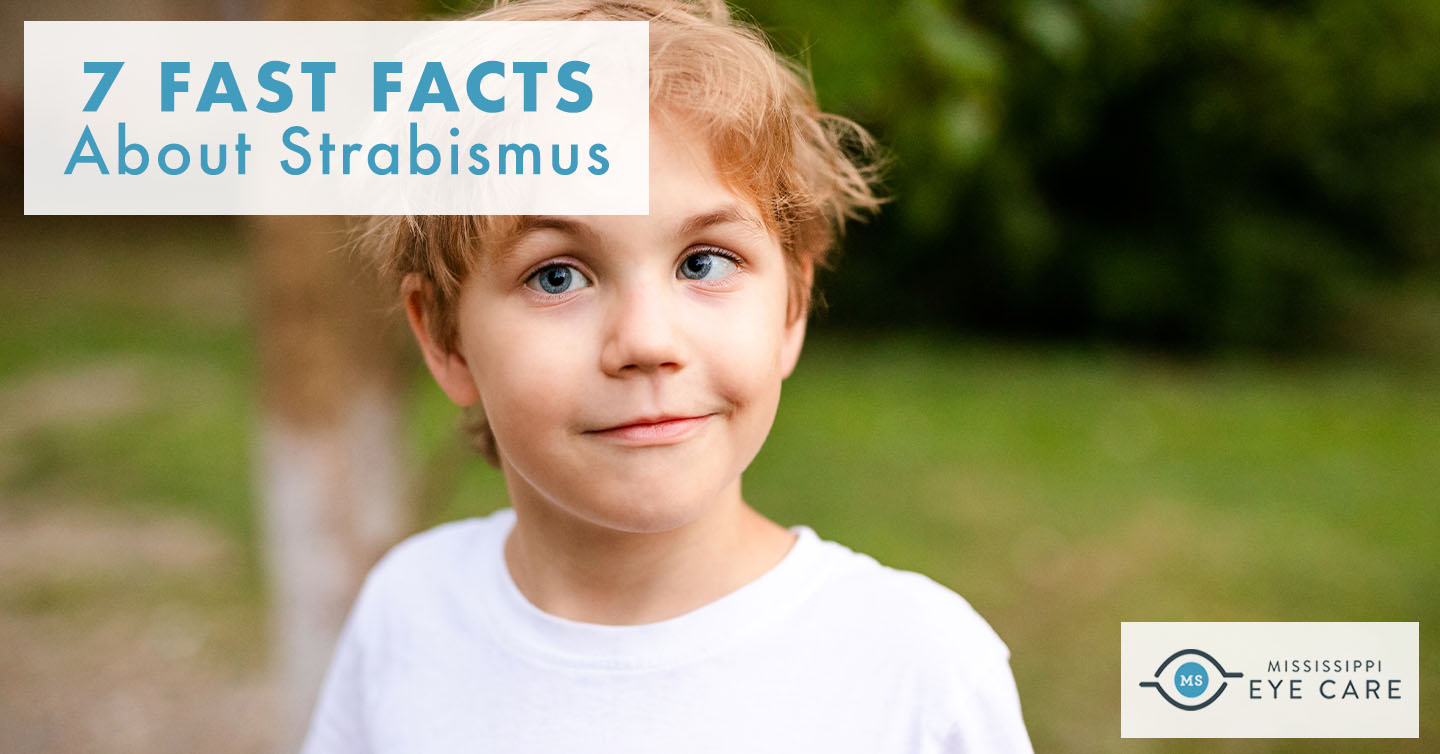Strabismus is a relatively common condition that affects about one out of every 20 kids. To understand this condition and learn how you can detect and treat it, check out these seven fast facts about strabismus.
What is strabismus?
Strabismus is a word for eyes that do not align. This misalignment of the eyes can cause one eye to deviate inward toward the nose (esotropia) or outward (exotropia), while the other eye remains focused. Although, in some cases, strabismus can affect both eyes.
This condition is most commonly known as crossed eyes.
What causes the misalignment?
The misalignment results from the failure of the eye muscles to work together. It can also develop as a result of other general health conditions or eye injuries.
Is strabismus present at birth?
Although strabismus may be present at birth, it can also become apparent at a later age or appear at any time.
Is it important to detect strabismus early?
Yes. Diagnosing and correcting strabismus at an early age can help prevent future vision issues.
For example, children with uncorrected strabismus can go on to develop amblyopia, most commonly known as a lazy eye.
What treatment is available?
This condition cannot be outgrown and will not improve on its own. But there is treatment available. Types of treatment can include the following:
- Glasses: commonly prescribed to improve focus and redirect the line of vision.
- Medication: this can include eye drops, ointment or injected medication (this is to selectively weaken an overactive eye muscle).
- Surgery: performed on the eye muscles to straighten the eyes if nonsurgical treatments fail.
- Eye exercises: can be recommended by a doctor to try before surgery or to be used after.
What is false or pseudo-strabismus?
When learning these fast facts about strabismus, it is also important to remember that pseudo-strabismus is also a possibility. Pseudo-strabismus is when the eyes look to be misaligned, but they truly are not.
An extra fold of skin near the inner eye, a broad, flat nose or eyes that are unusually close together can create the effect of pseudo-strabismus. This typically disappears as a child’s face grows.
When should I have my child checked for strabismus?
At birth, an infant’s eyes cannot focus directly on objects, so they may appear to cross or wander outward at times. But, by the age of three to four months, they should have the ability to focus on small objects.
If you notice your child’s eyes are crossing or looking outward persistently after four months, you should take your child to an eye care professional for an exam.
Summary
Now that you know these fast facts about strabismus, are you or your child ready for an eye exam? Visit your local Mississippi Eye Care clinic! We are proud to provide the best services in the Golden Triangle region of Mississippi and beyond. We accept both eye emergencies as well as scheduled appointments.
For more vision health news and tips, continue reading our blogs.




